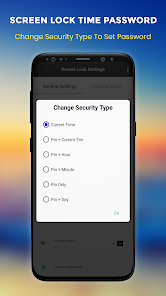1400 times change password in a day Are you constantly changing your passwords in a desperate attempt to stay one step ahead of hackers? It’s time to hit pause and rethink this strategy. While it may seem like the more frequently you change your password, the safer you’ll be, that’s not necessarily the case. In fact, changing your password too often can actually do more harm than good. So before you rush off to update all of your accounts for the 1400th time today, let’s explore why this obsession with constant password changes might not be as effective as you think.
Are you tired of constantly changing your passwords? Are those endless updates really keeping you safe from hackers? It’s time to take a closer look at this practice and find out if it’s truly worth all the effort. In this blog post, we’ll delve into the dangers of frequent password changes, tips for creating secure passwords and remembering them without losing sleep over forgotten login details. We’ll also discuss how using a reliable password manager can make life so much easier! And yes, we will address that mind-boggling statistic – why some people feel compelled to change their passwords an astonishing 1400 times in just one day! Get ready for some eye-opening insights on cybersecurity and practical solutions that will help safeguard your online presence effectively. So grab a cup of coffee (or tea) and let’s dive in!

The dangers of changing your password too often
When it comes to password security, many people have been led to believe that changing their passwords frequently is the best approach. However, this belief may not hold as much weight as we once thought. In fact, constantly changing your password can actually introduce more vulnerabilities into your online accounts.
One of the dangers of frequent password changes is that it can lead to weaker and less memorable passwords. When you’re constantly coming up with new combinations, it’s easy to fall into the trap of using predictable patterns or reusing elements from previous passwords. This makes it easier for hackers to crack your codes and gain unauthorized access to your accounts.
Moreover, changing passwords too often can also increase the likelihood of human error. With each change, there is a chance that you might forget your new password or get confused between different accounts’ credentials. This leads users to resorting back to old passwords or writing them down somewhere insecurely – both actions that compromise security rather than enhancing it.
Additionally, constant password changes can create frustration and inconvenience for users who need frequent access to their accounts throughout the day. It becomes a tedious task keeping track of all these updates across various platforms and services.
It’s important to note that while regular password changes were once recommended by some cybersecurity experts in certain scenarios (such as after a data breach), recent studies have shown little evidence supporting this practice as an effective preventive measure against cyber threats.
In conclusion… Oops! We’re not quite at the end yet! Stay tuned for more insights on creating secure passwords and practical solutions for managing them effectively without compromising convenience in our next blog sections.
How to pick a secure password
When it comes to picking a secure password, there are a few key things you need to keep in mind. First and foremost, avoid using common passwords like “password123” or your birthdate. These are incredibly easy for hackers to guess.
Instead, opt for a password that is long and complex. Use a combination of uppercase and lowercase letters, numbers, and special characters. For example, instead of using the word “password,” try something like “P@ssw0rd!”.
Another important tip is to avoid using personal information in your password. Don’t use your name, the name of a family member or pet, or any other easily identifiable information. Hackers can often find this type of information with some simple online research.
It’s also essential to choose unique passwords for each account you have. Using the same password across multiple accounts puts all of them at risk if one account is compromised.
One way to remember multiple complex passwords is by creating patterns or associations that only make sense to you. For example, you could use lyrics from your favorite song combined with random numbers and symbols.
Remembering all these different passwords can be challenging, which brings us to our next point: consider using a password manager! A good password manager securely stores all your login credentials so that you only have to remember one master password.
In conclusion (as we don’t conclude), taking the time to pick strong and unique passwords will go a long way in keeping your accounts safe from potential breaches. And if remembering all those passwords seems overwhelming – give a trustworthy password manager tool 1400 times change management assistance in day!
How to remember your passwords
Remembering passwords can be a challenging task, especially when you have multiple accounts across various platforms. However, there are several strategies you can employ to help you remember your passwords without compromising security.
One method is to create unique and memorable phrases by combining unrelated words or replacing letters with numbers and symbols. For example, instead of using “password123,” try “p@ssw0rd!23.” This technique makes it harder for hackers to guess your password while still being easy for you to remember.
Another approach is to use mnemonic devices or mental associations. You can associate a specific image or story with each password to trigger your memory. For instance, if your password is based on the phrase “I love traveling,” imagine yourself exploring new destinations every time you enter it.
Additionally, consider utilizing password hints that only make sense to you but don’t give away the actual password. These hints act as gentle reminders and provide context without jeopardizing security.
Moreover, employing a consistent pattern in creating passwords across different accounts can also aid in remembering them. By using a similar structure or format for all your passwords, such as starting with an uppercase letter followed by lowercase letters and numbers, it becomes easier for your brain to recall them.
Consider using a trusted password manager tool. Password managers securely store all of your login information in one place and automatically fill in the details when needed. They often offer features like generating strong random passwords and syncing across devices so that you don’t have to rely solely on memory.
By implementing these strategies and possibly combining more than one approach together (but not relying solely on any single method), remembering even complex passcodes will become more manageable while ensuring the safety of your online accounts without having 1400 times change password in a day!
The benefits of using a password manager
The benefits of using a password manager are numerous and can greatly enhance your online security. First and foremost, a password manager allows you to create strong and unique passwords for each of your accounts. This is essential because using the same password across multiple platforms puts all of your accounts at risk if one gets breached.
With a password manager, you only need to remember one master password. The rest is taken care of by the software, which securely stores all of your login credentials. This not only saves you from the headache of trying to remember multiple complex passwords but also reduces the likelihood of forgetting them or resorting to weak ones.
Another advantage is that most password managers have built-in features such as automatic form filling and two-factor authentication support. These additional layers of protection can further strengthen your online security.
Furthermore, using a password manager eliminates the need for writing down passwords on paper or storing them in unsecured digital files. Your passwords are encrypted and stored in an encrypted vault that can only be accessed with your master password.
Investing in a reliable password manager is an effective way to safeguard your digital identity and simplify the management of your many online accounts without compromising convenience or security.
1400 times change password in a day
Is changing your password 1400 times in a day really necessary? In today’s digital age, where cyber threats are constantly evolving, it’s essential to prioritize online security. However, there is such a thing as going overboard with password changes.
The dangers of changing your password too often are often overlooked. Constantly updating passwords can actually lead to weaker security measures. How so? Well, when we’re forced to come up with new passwords frequently, we tend to take shortcuts or reuse old ones. This creates patterns that hackers can exploit and makes our accounts more vulnerable.
Instead of focusing on the frequency of changing passwords, let’s shift our attention towards creating strong and unique ones. A secure password should be long and include a mix of uppercase and lowercase letters, numbers, and special characters. Avoid using personal information or common phrases that can easily be guessed.
Remembering multiple complex passwords may seem like a daunting task but fear not! There are strategies you can employ to ease the burden. Consider using passphrases instead of just words – these are longer combinations of random words that are easier for humans to remember but harder for machines to crack.
If the thought of managing numerous passwords still overwhelms you, consider utilizing a password manager tool. These handy applications securely store all your login credentials in one place behind one master password. With this approach, you only need to remember one strong passphrase while ensuring different passwords for each account.
In conclusion (not summarizing), rather than fixating on an arbitrary number like “1400 times change password in a day,” focus on creating strong and unique passwords that you update periodically based on risk assessment rather than an automated schedule dictated by some predetermined rulebook.

Conclusion
Conclusion
In a world where cybersecurity threats are constantly evolving, it’s important to stay vigilant and take necessary measures to protect your online accounts. While changing your password regularly is generally considered a good practice, there is such a thing as going overboard.
Contrary to popular belief, changing your password too often can actually do more harm than good. It can lead to weaker passwords that are easier for hackers to crack, and it can also make it difficult for you to remember all of your passwords.
Instead of constantly changing your password, focus on creating strong and unique passwords that are less likely to be compromised. Remembering these passwords can be challenging, but with the help of some simple techniques like using mnemonics or passphrase strategies, you can significantly improve your ability to recall them without compromising security.
For those who struggle with managing multiple passwords, consider using a trusted password manager. These tools not only store all of your login credentials securely in one place but also generate complex passwords for you and even automatically fill them in when 1400 times change password in a day needed.
While the idea of someone attempting 1400 password changes in one day may seem extreme or even impossible for most individuals, it serves as a reminder that our digital lives are under constant threat from cybercriminals. By adopting secure practices and utilizing the right tools, we can better protect ourselves against unauthorized access and keep our sensitive information safe.
Remember: balance is key when it comes to password security. Stay proactive but not obsessive about changing them frequently. Focus on creating strong passwords tailored for each account instead of relying on generic ones across multiple platforms. With these precautions in place along with other cybersecurity best practices like enabling two-factor authentication and keeping software up-to-date, you’ll greatly reduce the risk of falling victim to hacking attempts.
So take charge today – prioritize strong passwords combined with smart management techniques – and safeguard yourself against potential digital threats!


